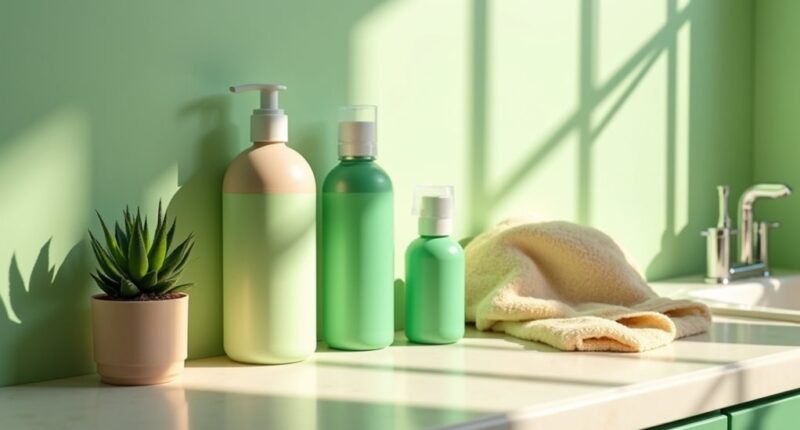Gen Z passionately craves eco-friendly beauty products. They want transparency and clean formulations. Yet, despite this, single-use bottles still entice them like candy at a grocery store. Why? Convenience often trumps eco-concerns, especially when wallets get tight. Familiarity with traditional products makes it tough to resist. Their keen awareness of greenwashing adds to the mix, creating a twist in their beauty choices. Curious about the balance between sustainability and convenience? There’s much more under the surface!
Gen Z’s Eco-Beauty Dilemma: Choices and Challenges
As the world spins into an era where sustainability is not just a buzzword but a lifestyle choice, Gen Z stands at the forefront of the eco-beauty revolution. With a staggering 81% of these young consumers prioritizing ingredient transparency, they are shaking up the beauty industry like a well-mixed smoothie—refreshing and invigorating, yet sometimes a little messy.
Many Gen Z shoppers have their eyes peeled for paraben-free and fragrance-free formulations. About 33% of them are all about those clean beauty vibes, while 72% are ready to part with extra cash for eco-friendly products. It’s a noble quest, yet paradoxically, they still find themselves reaching for single-use bottles. The allure of convenience often wins over the ideal of sustainability, like a tempting slice of cake at a birthday party—hard to resist, even when they know it’s not good for them. This thriftiness shaped by financial crises drives their hesitance to overspend, complicating their eco-friendly aspirations. Nearly 60% of Gen Z and Millennial shoppers stopped buying brands without environmental credentials, reflecting their growing awareness of the impact of their choices.
Social media, particularly TikTok and Instagram, plays a pivotal role in shaping these preferences. Influencers and viral trends often dictate what’s “in” and what’s “out” in the beauty world, driving more than 50% of Gen Z’s shopping decisions. Many are now exploring conscious consumption practices as a step toward more sustainable beauty routines without sacrificing their favorite products.
Yet, a hefty 62% are wise to the game of greenwashing, the industry’s cheeky attempt to dress up unsustainable products as eco-friendly. Trust is paramount; they want brands that genuinely walk the talk.
While nearly 60% prefer brands with environmental credentials, many still grapple with affordability. It’s a tough balancing act—like trying to choose a salad at a pizza joint. Disposable income limitations often lead them back to familiar, less eco-conscious choices.
Ultimately, while Gen Z’s demand for eco-beauty is commendable, the journey is riddled with challenges. They inspire sustainability shifts across generations, but the path isn’t always linear.









